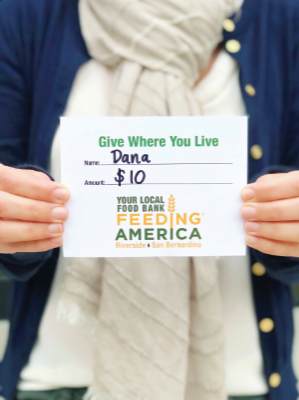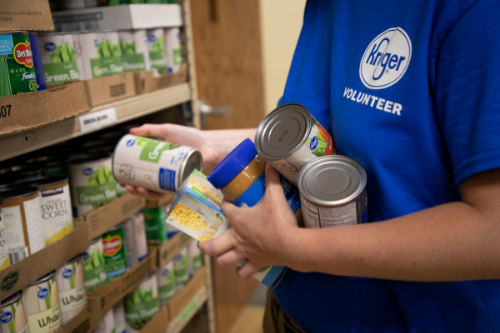Strong communities are everyone's responsibility, including the businesses that serve them. Each year grocery stores across the country help hundreds of local nonprofit organizations that are working to make their communities better.
Cause marketing is a great way for nonprofits and corporations to join together for a similar purpose, and it is becoming a key way for businesses to show their philanthropic side. These partnerships with nonprofit organizations to help them raise money and awareness and, in return, this charitable action generates more business for the company.
This type of corporate philanthropy is ideal for supermarkets and grocery stores due to consistent foot traffic. And those $1 or $5 contributions at the register can add up to something significant. American individuals, bequests, foundations and corporations gave an estimated $427.71 billion to U.S. charities in 2018, according to Giving USA 2019: The Annual Report on Philanthropy for the Year 2018.
To get a piece of that charitable pie, companies use various tactics such as asking shoppers to buy a paper cutout to hang in the store, add a dollar or two to their total, offering special coupons to donors or asking customers to round up their purchase to the next buck. The simpler the process, the more likely customers are to participate.
Helping kids
One of the most recognizable cause marketing campaigns is the Miracle Balloons to benefit the Children’s Miracle Network. For six weeks of every year, employees of Bentonville, Arkansas-based Walmart ask for donations from customers at checkout as part of the Miracle Balloon campaigns, an ongoing partnership with Walmart and Sam’s Club. If donors contribute a dollar or more, they can place their names on a paper Miracle Balloon and place it on the honor wall. Walmart has helped raise $6.9 billion for children's hospitals since 1983.
Carlisle,  Pennsylvania-based GIANT Food Stores is also one of the top 15 corporate sponsors in the country for CMN Hospitals. Combined with the grocer’s in-store Miracle balloon campaign conducted earlier this year, customers raised more than $2.5 million for local CMN in 2019. That number includes a record-breaking total of $814,223 was donated to local CMN Hospitals by its customers during the company’s 2019 Candles for Kids fundraising campaign.
Pennsylvania-based GIANT Food Stores is also one of the top 15 corporate sponsors in the country for CMN Hospitals. Combined with the grocer’s in-store Miracle balloon campaign conducted earlier this year, customers raised more than $2.5 million for local CMN in 2019. That number includes a record-breaking total of $814,223 was donated to local CMN Hospitals by its customers during the company’s 2019 Candles for Kids fundraising campaign.
This type of charitable action is found at stores across the county. It’s a way for larger retailers to establish themselves as part of their communities.
“Anytime we open a new store, we take the pulse of that community, meet with local leaders and find out exactly how we can be helpful,” says Rachel Shemirani, senior vice president of San Diego-based retailer Barons. “It’s actually an essential part of creating an engaging and exciting customer experience, even when they are not in your store.”
Shemirani says supporting local schools, food-insecure communities and dog rescues are causes that are very dear to Barons and therefore take priority. Last year Barons supported 350 organizations and donated almost $300,000 to those organizations.
“We have great continuing relationships with the schools in our communities, Feeding San Diego and Feeding America, Riverside as well as a variety of local animal rescues. We are also constantly fielding requests to support other smaller local organizations,” she says. “It’s important to us to help organizations that are hyper-local to our stores. We find that we make the biggest impact that way. When a customer sees that we’re supporting a local organization, they are quick to come in the next time they shop in our stores to thank us for supporting local organizations as well as tell us who they’d like us to partner with in the future.”
Retailers field hundreds of requests each year for donations and partnerships. The application process varies for each, but most companies are only able to accept requests from registered 501c3 non-profit organizations with a federal Employer Identification Number. For retailers such as GIANT, the review process can take up to eight weeks to process.
Fighting hunger
In addition to partnerships with national and local nonprofits, some companies focus effort on their internal cause-related goals. Cincinnati-based Kroger’s Zero Hunger, Zero Waste social impact plan, which launched in 2017, is a commitment to end hunger in the communities they serve and eliminate waste across the company by 2025.
"Zero Hunger, Zero Waste is shaping the national discussion around how to end hunger and eliminate waste across America," says Keith Dailey, Kroger’s group vice president of corporate affairs. "We are intently focused on using our scale for good and we encourage our customers, associates and other businesses to join us."

As part of its mission, Kroger donated $328 million to local communities in 2018, including more than $192 million in food and funds to end hunger and provided a total of 316 million meals to communities across the country. Kroger also partnered with Oprah Winfrey to donate one million meals to Feeding America. Together with Winfrey's food line O, That's Good!, Kroger pledged an additional one million meals to Feeding America to help feed families across the country.
Last year, Kroger was named sixth on Fortune magazine's Change the World 2018 list, joining 50 big companies around the world that are also using their resources to solve society's most complex issues.
Not all causes come in the form of straight donations. Retailers are always looking for new ways to engage their customers in their giving efforts. Barons’ Backroom Beer Pairing event has raised over $100,000 for local organizations. The company partners with a local craft brewery to create a simple but delicious menu that pairs with their beers. Barons charges $15 per ticket and typically has anywhere from 60 to 100 people attend the event.
“100% of the ticket price goes to the local charity. Not only can our customers try a new local beer and taste some of our unique offerings, they can have a great night out with their neighbors all while supporting an organization,” says Shemirani. “We hold this event four times a year and our customers just love it.”
In an era of social responsibility, customers want to know that the places where they spend their money share their desire to make the community and world a better place by supporting an important cause.
“If you say you’re a neighborhood market, you must be an active participant in your community,” says Shemirani. “When local businesses are active in their neighborhoods, the community thrives. And when a community thrives, everyone wins.”

